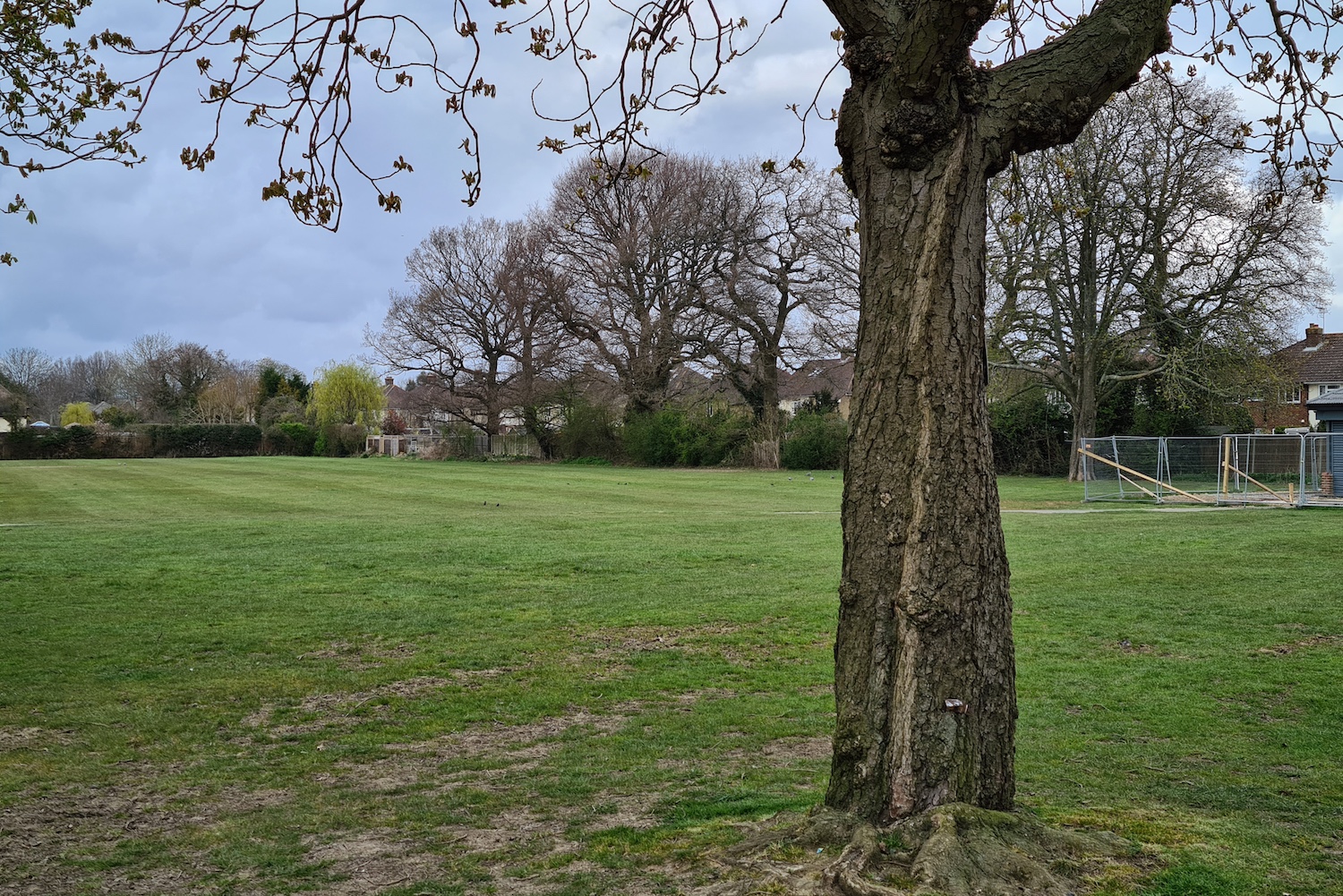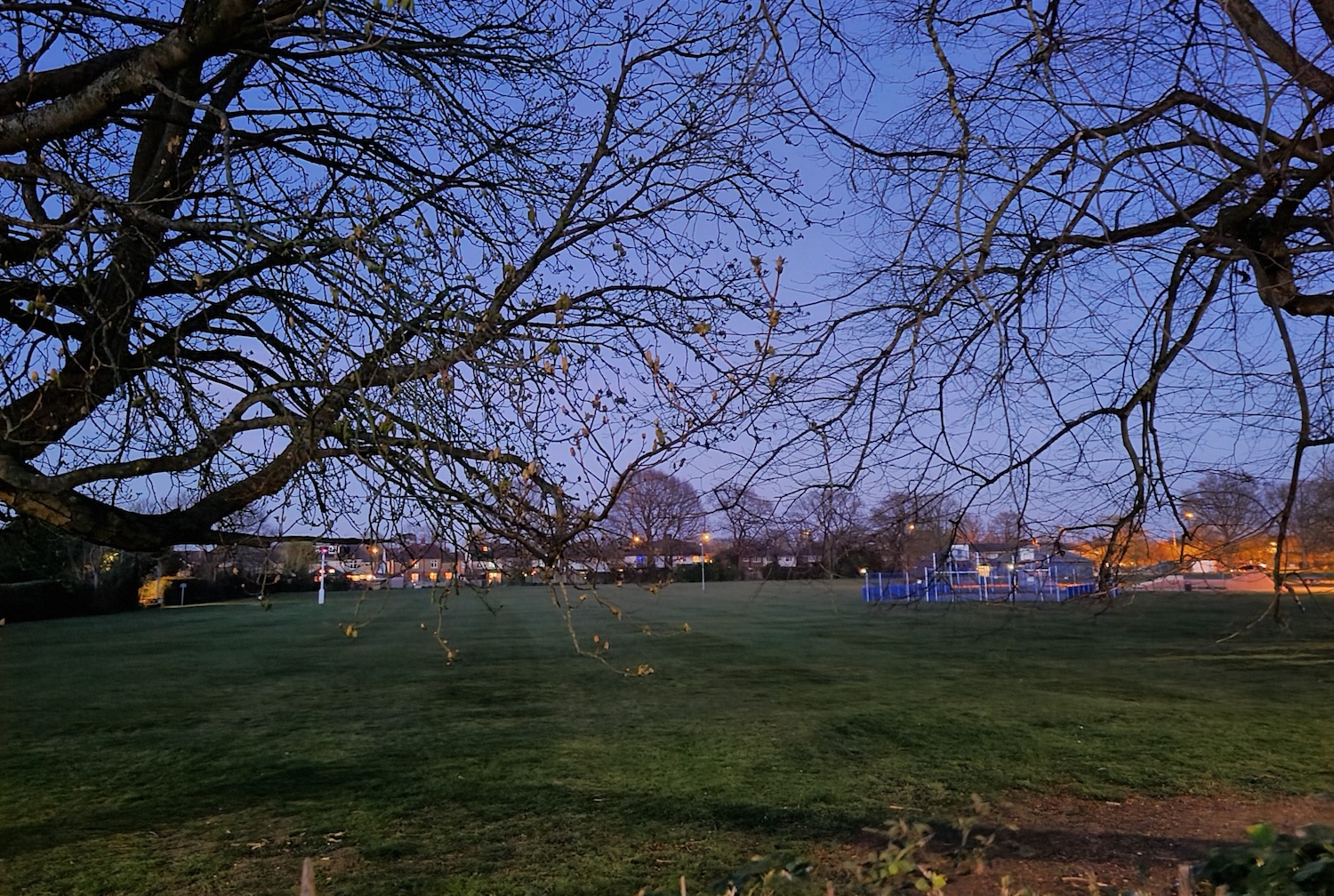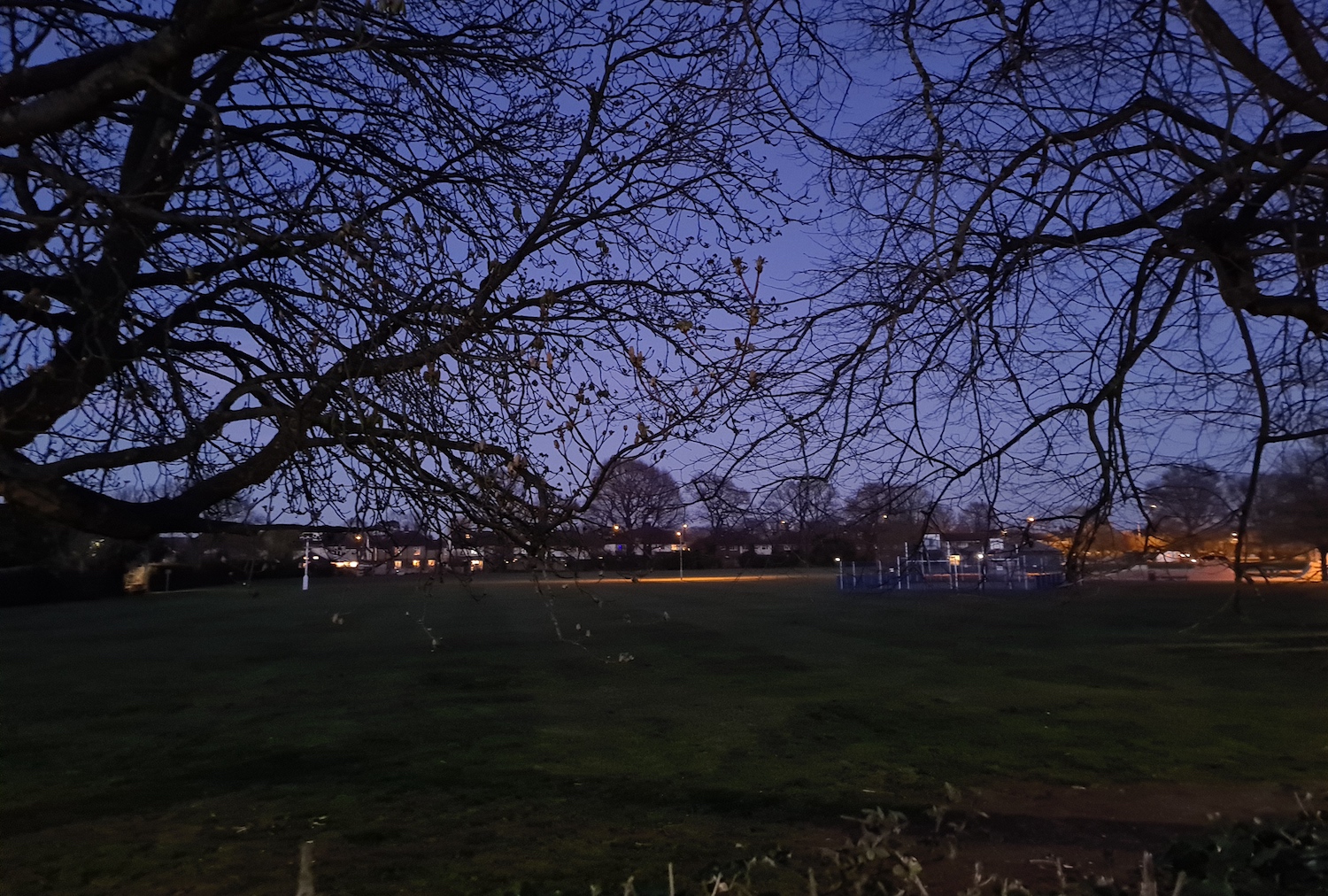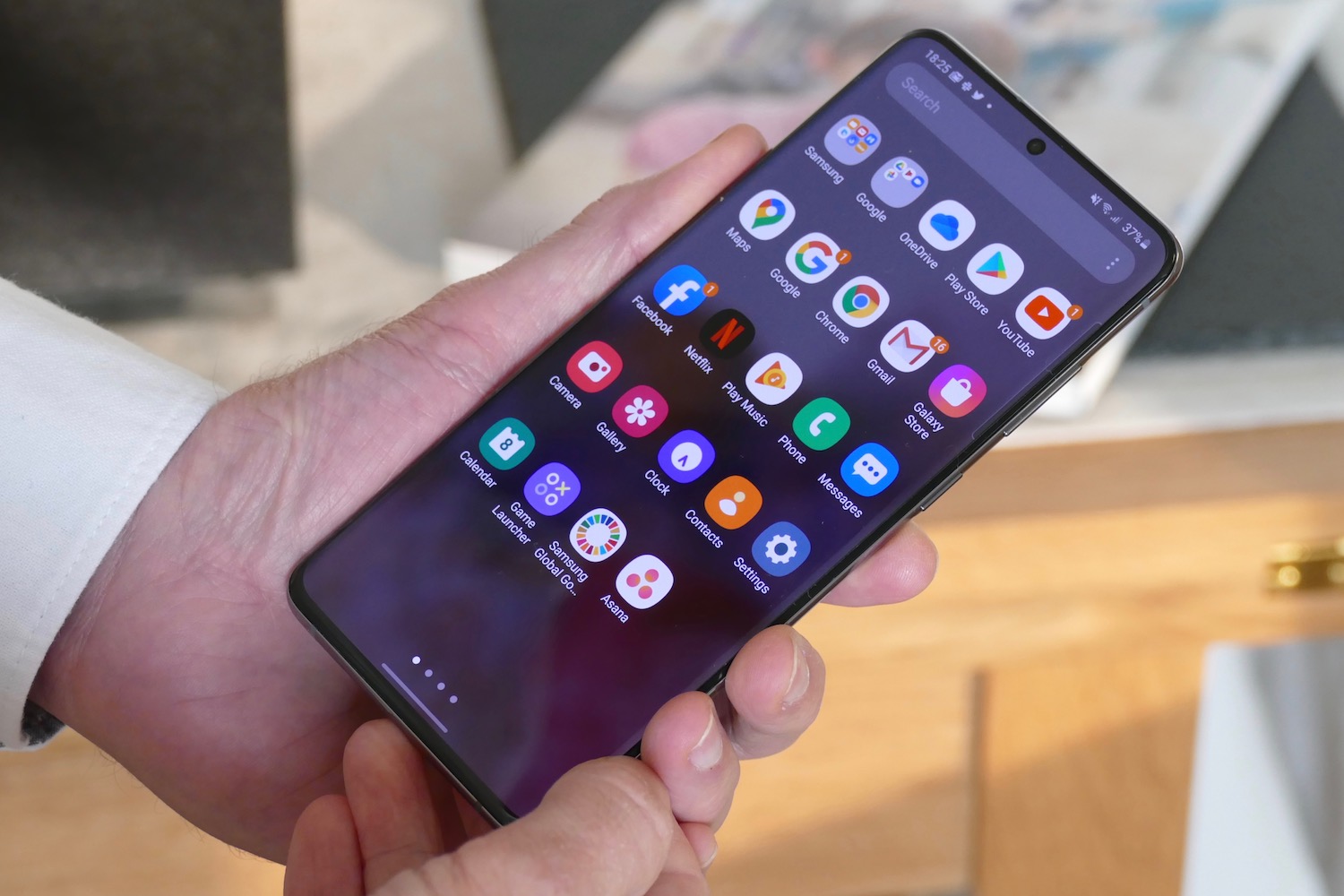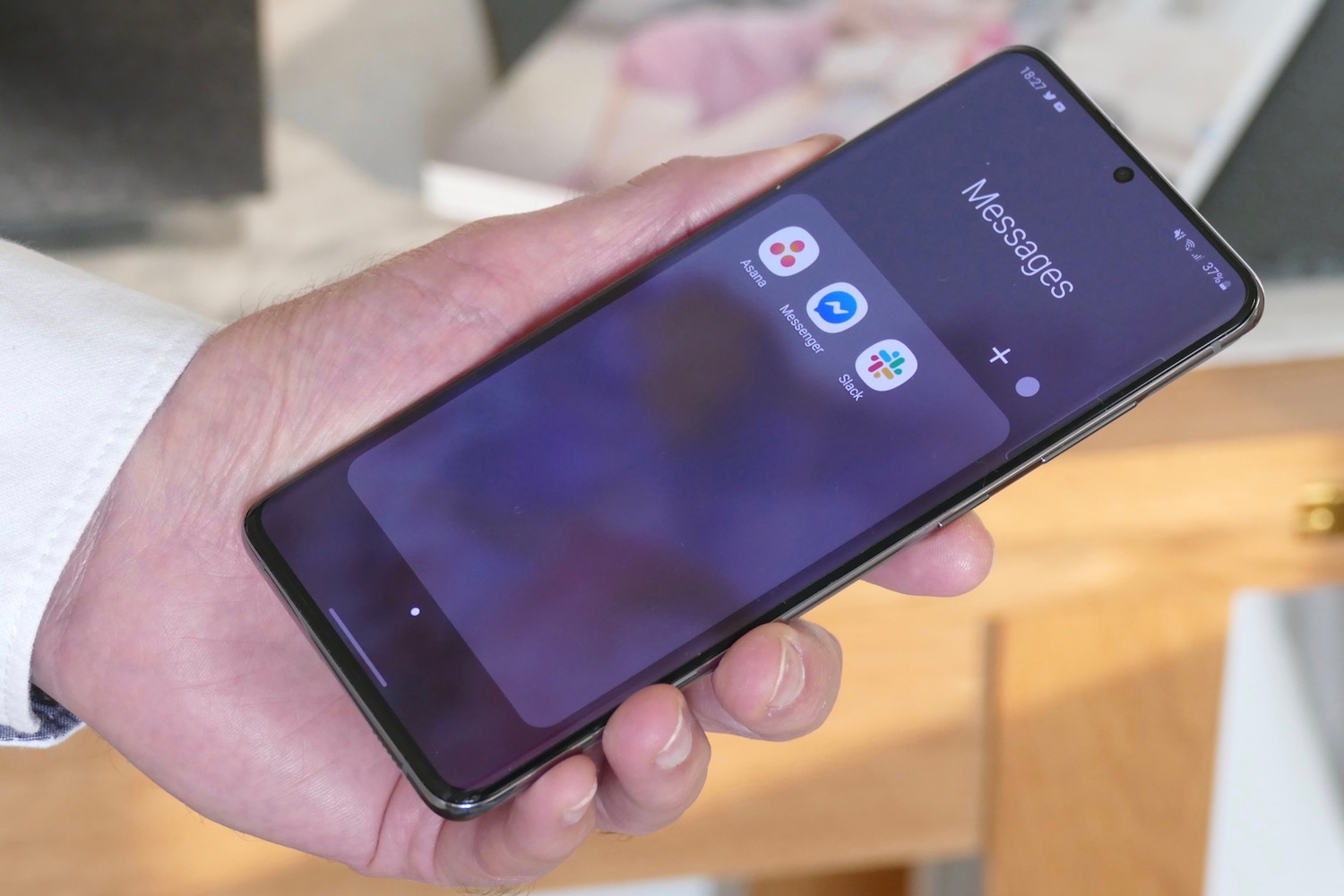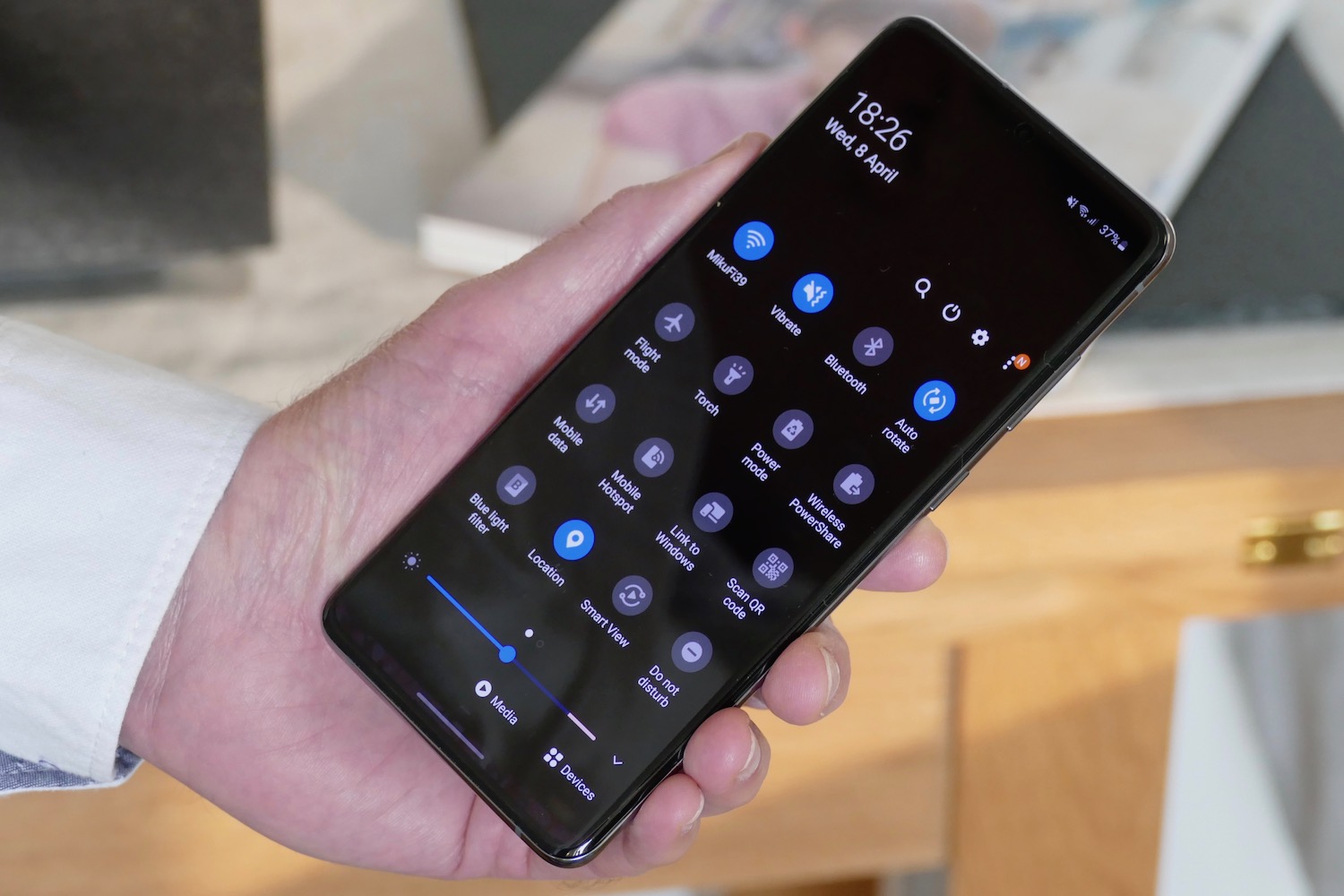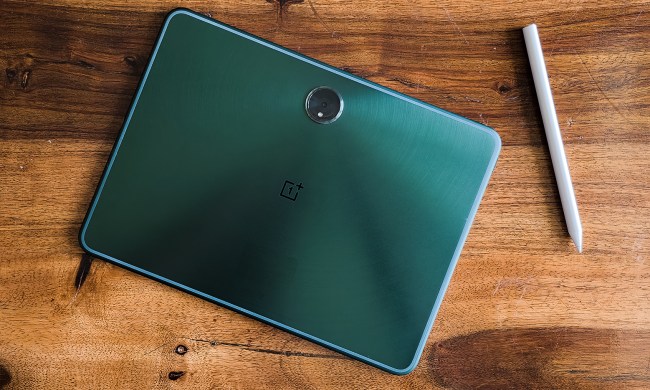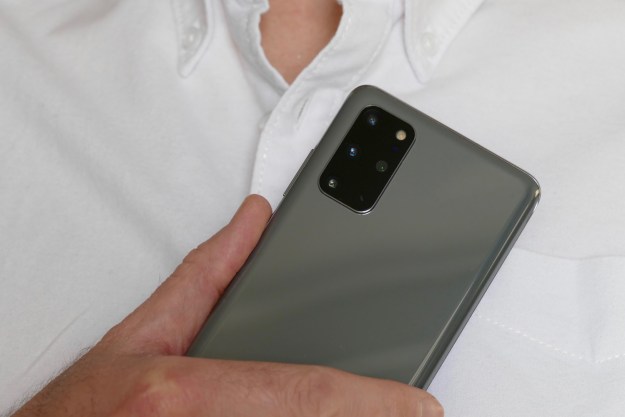
“The Samsung Galaxy S20 Plus does everything you need now, and with 5G, it's ready for the future. It's the Galaxy S20 phone to buy in 2020.”
- Beautiful screen, 120Hz refresh rate
- Camera takes good photos in all environments
- Slim and lightweight
- 5G for the future
- Bland design
- Camera software needs some tweaks
The Samsung Galaxy S20 Plus is the smartphone equivalent of a familiar friend. Its design, camera, and performance reliably deliver in all the ways you’d expect. Yet you won’t find any surprises, either. It’s a safe, trustworthy companion.
There’s nothing wrong with that. The new and unexpected can be fun, but it can also disappoint or distract. This year, among the chaos of everyday life, the safe pick feels like the right pick. Of the three new Samsung Galaxy S20 smartphones released in 2020, this is the one you should buy.
Design
The Samsung Galaxy S20 Plus is not a beautiful smartphone, but it’s a maturely crafted, well proportioned mobile device. This understated phone isn’t for showing off unless you get it in the pretty cloud blue color. In the black or gray seen here, it won’t turn heads, but you can be smug about using one of the most refined phones you can buy at the moment.

What do I mean? The 6.7-inch Dynamic AMOLED screen isn’t heavily curved down the side of the phone, but the 3D glass over the top is beautifully shaped at each corner to give the front of the phone a modern shape that’s comfortable to hold. Down the right-hand side is the power button and volume rocker, and rather than being just sandwiched between the chassis and the glass, the metal bodywork tracks around them.

While the Galaxy S20 Plus’ style can be appreciated, it’s not for everyone. The camera bump on the back is a dreary rectangle in the top corner, and the grey color seems inspired by when the Navy last gave a battleship a quick spruce-up. It’s also not much different from many other phones available today, including the Huawei P40 Pro and the Oppo Find X2 Pro.

The Galaxy S20 Plus is certainly light and slim. It’s 6.5 ounces and 0.3 inches thick, making it not only a better phone to slip into your pocket, but also to hold for long stretches. It is slippery, however, and its width makes one-handed use a stretch. A case would be advisable to keep the phone protected.
Compared to its brethren, the S20 Plus is just right. The Galaxy S20 Ultra is considerably larger and heavier, and the S20 is just a little too small by modern standards, unless you specifically desire a small phone. The S20 Plus feels like the best fit for most people.
Camera
The S20 Plus has a quad sensor camera inside the bump on the back, made up of a 12-megapixel f/1.8 wide-angle lens, a 64-megapixel f/2.0 telephoto sensor, and another 12-megapixel f/2.2 ultra-wide sensor. A time-of-flight sensor completes the lineup, and this is the same camera system found on the regular Galaxy S20 too. You can take 3x hybrid zoom shots or up to 30x digital, shoot 8K video at 24 frames per second (fps), record with HDR10+, and slow-motion video at 960 fps.

In the sunshine, shots are quite heavily saturated which may split opinion, but often I found it livened up images nicely. Night mode is effective, brightening up medium-lit scenes without adding excessive noise, but in very low light it does get noisy and less usable. Its worst crime is consistently inaccurate edge detection in portrait mode, and problems with focusing. When we tested the Galaxy S20 Ultra the same problems were found.
Outside of the saturation boost, Samsung’s software can be heavy-handed with sharpening too, but you do have to go looking for it to notice. I didn’t have problems with the 8K video mode which we experienced on the S20 Ultra, with the high-res videos shooting smoothly and looking stunning on the screen too. It should be noted this S20 Plus has a Samsung Exynos processor, while the S20 Ultra we reviewed had the Qualcomm Snapdragon 865.
While 8K video does look good, playing it back in all its glory won’t be possible for most due to the expense of buying an 8K TV at the moment, so it’s better to avoid the massive file sizes (at least 500MB per minute) and shoot at 4K or 1080p. That way, you can also use Samsung’s excellent Super Steady stabilization mode, which operates uncannily well.
The Galaxy S20 Plus also has Samsung’s fun Single Take mode, where you shoot a video instead of taking stills, and the software generates a selection of clips, GIFs, and still images from it for you. It’s great for grabbing shareable images and video in the moment, without worrying you’re going to miss something. It’s easy to use, and really fun.
Selfies taken with the 20-megapixel hidden in the central hole-punch are a mixed bag. When you don’t use the portrait mode they come out very well, with lovely colors and natural tones, but portrait mode is unreliable, blurring out edges when they shouldn’t be and smoothing skin to an unacceptable level. I do like the auto-enabled gesture control, where holding your hand up starts a countdown timer. The phone never failed to “see” my hand, making it reliable and usable.
Results from the Galaxy S20 Plus’ camera are generally really good almost regardless of the environment or time of day. It’s a great all-rounder, and versatile enough that you won’t be left wishing for a feature it doesn’t have, provided you don’t expect much from portrait mode and like a bit of saturation in your sunny day photos.
Screen and performance
Samsung knows how to make a stunning screen. The 6.7-inch Dynamic AMOLED screen has a 3200 x 1440 pixel resolution with a 120Hz rate and support for HDR10+. It’s unquestionably beautiful, with stunning colors and dynamic range, especially when viewing HDR content. Luckily, lower resolution video doesn’t suffer and I enjoyed watching older 720p video just as much. The S20 Plus’ size makes it an excellent video partner too. The low weight described earlier makes it great for relaxed viewing on the couch or in bed.

The 120Hz refresh rate means smoother scrolling, less flickering, and less eye strain when browsing for longer periods, and it’s highly effective. You can’t use the 120Hz refresh rate when the screen is set at full resolution. At this time it switches back to a 60Hz refresh rate, which it also does should the phone get too hot. I preferred the benefits of the higher refresh rate over the higher resolution, so I found the 2400 x 1080-pixel/120Hz combination best for everyday use.
Much as I like the S20 Plus’ screen and overall size, it can’t compete with the fabulously giant 6.9-inch S20 Ultra for sheer immersive viewing, but you have to decide if you’re willing to live with the similarly epic size and weight. That’s why the S20 Plus is the sensible choice out of the three S20 phones. Put it next to the iPhone 11 Pro, another phone with a great screen, and the S20 Plus’ vibrance is clear, with colors bursting off the screen next to the more natural tones on the iPhone.

The Galaxy S20 Plus is sold with two different processors inside, depending on where you buy it in the world. In the U.S. it comes with Qualcomm’s Snapdragon 865 processor while in the U.K. it has Samsung’s own Exynos 990 chip, which is the version tested here with 12GB of RAM.
In the real world, differences between the two will be minimal for everyday tasks, although some independent tests have shown the Snapdragon 865’s Adreno 865 graphics chip is more efficient, so may return better battery life when gaming or using the screen at full resolution. Here are two benchmark test results:
- Geekbench 5: 919 single-core/2,838 multi-core
- 3DMark: 6,357 (Vulkan)
This puts it just behind the Snapdragon 865-powered Oppo Find X2 Pro. A quick test of an Exynos-powered S20 Ultra unsurprisingly saw it return scores very close to that of the S20 Plus. As you’d expect from a high-performance smartphone like this, the S20 Plus has no problems handling everyday tasks including gaming. Although, like the S20 Ultra, the body can get quite warm to the touch when it’s working very hard.
Luckily, the S20 Plus doesn’t become hot when playing games, and again, its lack of weight makes long sessions possible without fatigue. Even with the graphics set at high on Asphalt 9: Legends, the game is as fast and exciting as usual. The view stretches across the entire screen, and you soon forget the punch-hole camera is there. DariusBurst SP, which runs at 120Hz, is beautifully smooth and enjoyable, but some game content is lost at the top due to the phone’s aspect ratio if you play full-screen. This also affects some older games like Reckless Racing 3, resulting in a smaller play area due to the wide aspect ratio. These issues are not unique to the S20 Plus, though.
5G comes as standard on the S20 Plus, so it’ll be ready for when the new network comes to your area. During this time of social isolation, I have only been able to test the S20 Plus on Vodafone’s 4G network and the EE’s 4G network in the United Kingdom, where it performed superbly and provided excellent call quality and reception.
Software and battery
Samsung’s software can be described in a similar way to the design. It’s hugely usable, attractive but not over-the-top, and a perfect companion for most people to use daily. It’s colorful too, with consistently shaped icons across the operating system, an effective system-wide dark mode, and a logical settings menu. The always-on screen is informative and can be customized a little, and notifications can be actioned from the notification shade.
Downsides? Nothing serious, just a few quibbles. Samsung’s OneUI 2.0 is substantially different in look to Android on a Google Pixel, which some may not like, and while the Bixby virtual assistant is on board, it’s largely useless. Samsung has also premapped the power button to bring up Bixby rather than turning the phone on and off, which is now done with a button in the notification shade. This can be changed in the settings, but is still annoying. Samsung Daily, which slides in from the home screen, is also a pointless mess of widgets and alerts.
A big 4,500mAh battery powers the Galaxy S20 Plus through a full day of quite heavy use, even with the 120Hz refresh rate active in my experience. During this time of social isolation, the S20 Plus has dealt with multiple voice calls, several lengthy video calls, a little photography, plus a regular amount of general use, and it has generally lasted from early morning until late at night. Days with moderate use will not see the S20 Plus get close to running out of power.

Charging is quick too. Inside the box is a 25W charging block, and the phone supports wireless charging too, and although it’s not as fast as some of the fastest phones out there (the Oppo Find X2 Pro, for example) it’s fast enough for most. A 30-minute charge takes the battery to 55% from flat, and about 75 minutes to full.
Price, warranty, and availability
The Samsung Galaxy S20 Plus costs $1,200, so it sits in the middle of the $1,000 Galaxy S20 and the $1,400 Galaxy S20 Ultra. The phone can be purchased through Samsung’s website, and through major carriers with a contract. In the U.K. the phone costs 1,000 British pounds, and I tested the phone on the Vodafone network, where it’s available with a contract starting from 68 pounds each month.
Our take
The Galaxy S20 Plus is the Galaxy S20 phone to buy, sitting at the right price with the right size screen in a body that’s sensibly sized. It’s very easy to use, very powerful, and the camera takes great photos in a variety of situations. It’s let down only by the bland design and some inconsistencies in the camera, but neither of these are deal-breakers.
Is there a better alternative?
You should also take a long, hard look at the $1,000 iPhone 11 Pro if you’re considering the Galaxy S20 Plus. It’s Apple’s best smartphone yet, and our pick as the best smartphone available today, but if you’re coming from Android, you’ll have to get used to some software and usage alterations. We think it’s worth it, though. The one concession here is that the iPhone does not have 5G, making the S20 Plus a slightly better long-term bet.
Staying in the Android camp, you can take a look at the Google Pixel 4 XL for its camera and software, but the battery life is much worse than the S20 Plus. Alternatively, wait to see what the OnePlus 8 is like when it’s announced on April 14. If you’re outside the U.S. or happy to import, then the Oppo Find X2 Pro ticks all the same boxes as the S20 Plus, with the benefit of superfast charging into the deal.
How long will it last?
The phone is made from glass so be careful or wrap it in a case, but the good news is it’s IP68-rated for water resistance. Android 10 is installed now, but there is no indication when the phone will receive an update to Android 11 following its release later this year. Samsung’s updates are moderately fast, and its latest flagships are usually taken care of first.
Because the phone has 5G, regardless of whether your local area does, it’ll still be ready to pull in the fast data speeds when you decide to adopt the new network. Add this to it using the latest processor, having the latest screen tech, plus a decent camera, and the Galaxy S20 Plus will have no problem lasting beyond the duration of a two-year contract.
Should you buy one?
Yes. If you want a phone from the Galaxy S20 family, this is the one to buy, and it’s also one of the very best Android phones overall.






